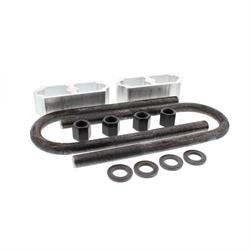Additional Drop on a Chevy Truck
In this Tech Tip, John answers a customer concerns about adding additional drop to his 1960-1972 Chevy truck.
“Hi, I’m looking at buying the relocation kit (Part #: 9106372), but was curious if you have a diagram and/or picture of what the final install looks like? Also I currently have 5” drop springs with a set of 5” drop shocks. I purchased the Speedway C-Notch kit & just finished installing it. (Looks great by the way) I also plan on purchasing the Speedway 1960-72 Chevy Pickup Rear Lowering Block Kit, 2in (Part #: 91000042). I was curious if Speedway can tell me with the above kit installed will I need to purchase new shocks or will the current ones will be suitable? So in summary, dropped 7”in the rear with 5” drop shocks & relocation kit? Will I need new shocks?”
Hi, you inquired about the potential need shock replacement if you installed the relocation kit on your pickup and also add the 2” lowering blocks. There is a good chance that the shocks may be too long but once installed you will need to measure the ride height length needed and compare to the ones you have. The shocks should have 50-60 percent of the stroke available for compression when hitting a bump. If you don’t have the necessary travel distance a different shock is needed or the suspension stop needs to be set to stop suspension travel before the shock bottoms out. Feel free to visit us on the web at www.speedwaymotors.com or call 1-800-979-0122 with questions or to place an order.
- John W.

